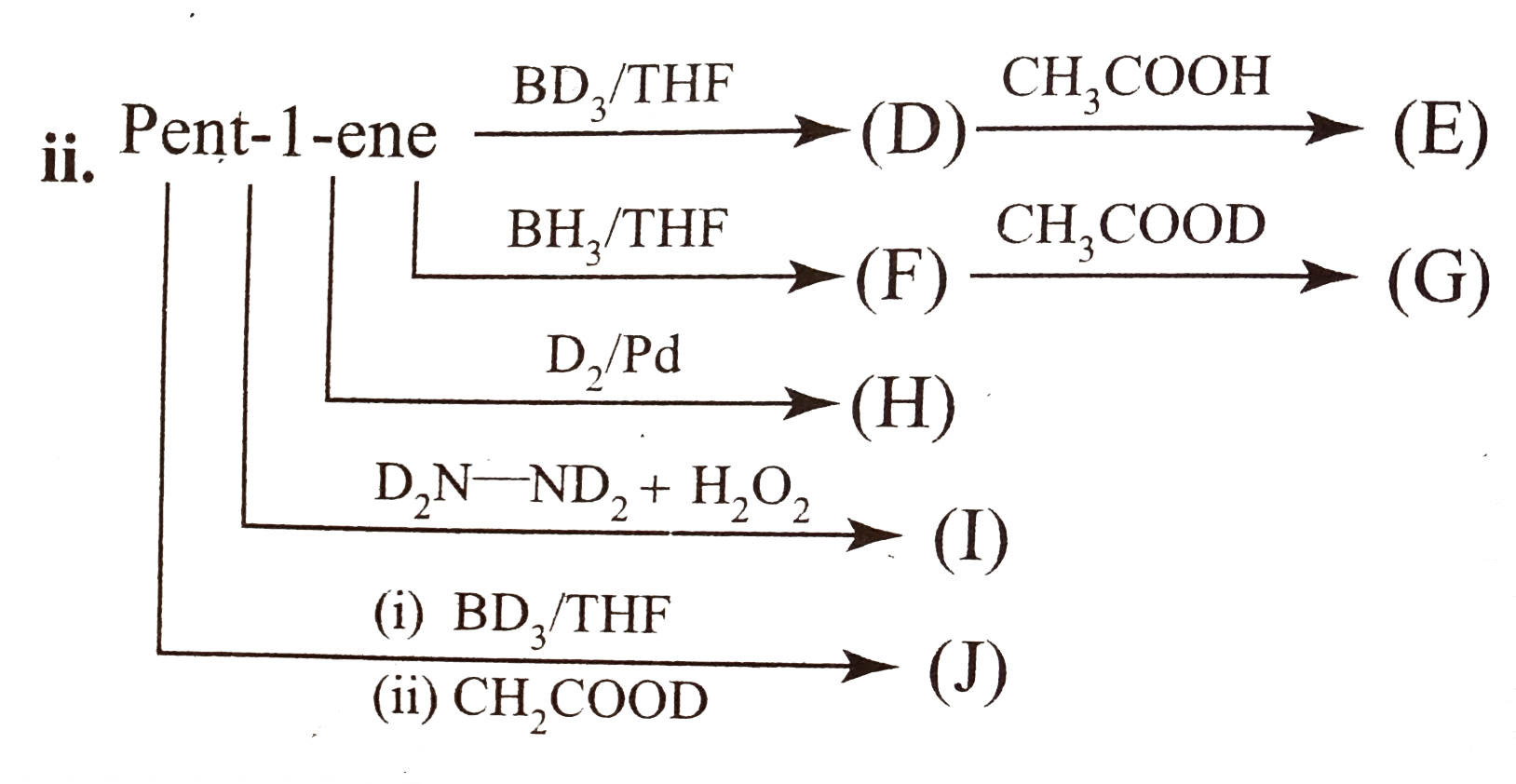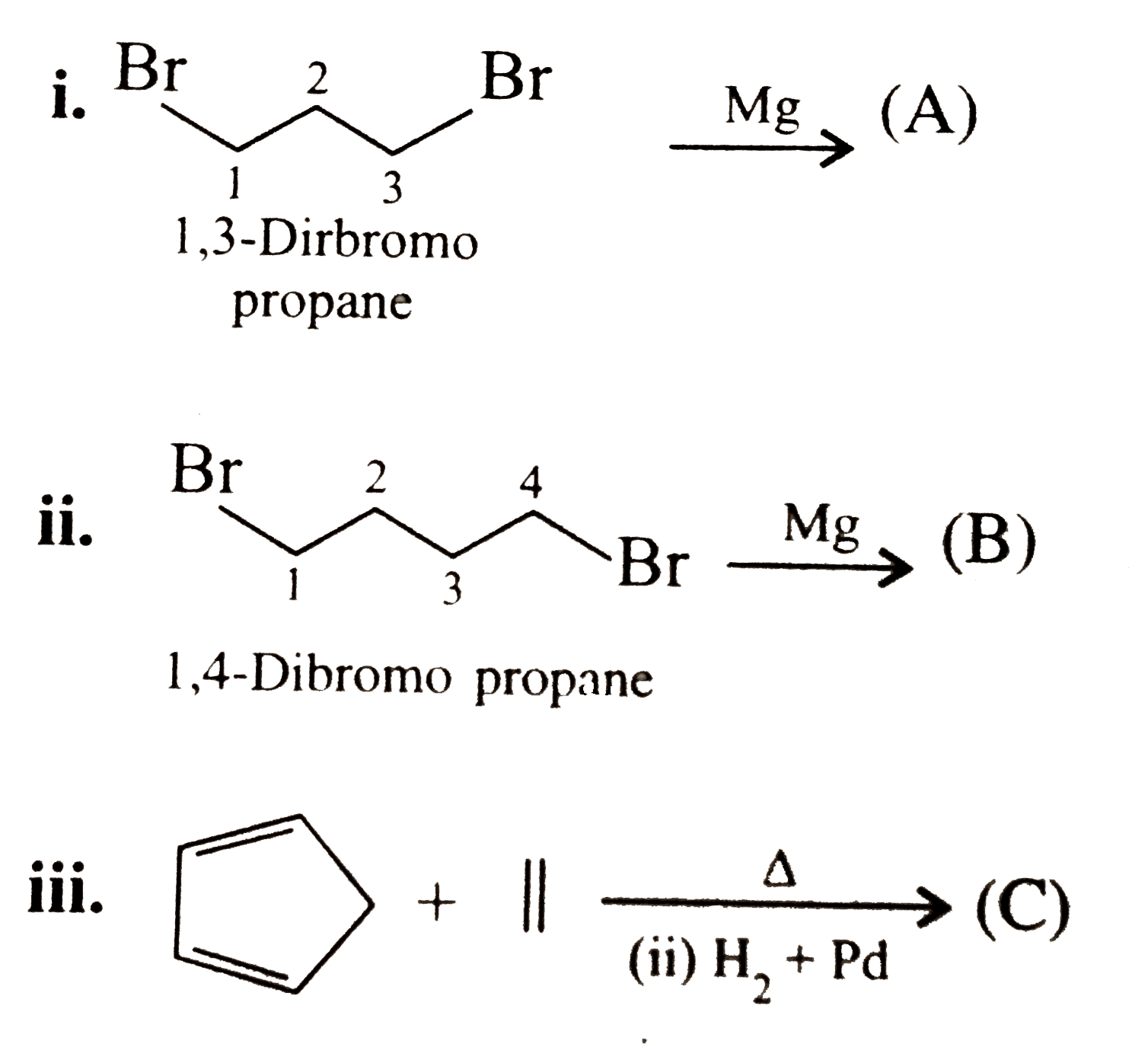Complete the following giving conditions and reaction :
(i) Phenyl cyanide into benzaldehyde.
To convert phenyl cyanide (benzonitrile) into benzaldehyde, we can follow these steps:
1. Identify the Starting Material:
The starting material is phenyl cyanide, also known as benzonitrile, which has the structure:
C6H5C≡N
2. Reduction of Phenyl Cyanide:
To convert phenyl cyanide to benzaldehyde, we need to reduce the nitrile group (-C≡N) to an imine. This can be achieved using stannous chloride (SnCl₂) in the presence of hydrochloric acid (HCl) and dry ether. The reaction can be represented as:
C6H5C≡N+SnCl2+HCldry ether−−−−−→C6H5C(=NH)⋅Cl(benzyl imine hydrochloride)
3. Formation of Imine Hydrochloride:
The product from the previous step is benzyl imine hydrochloride, which has the structure:
C6H5C(=NH)⋅Cl
4. Hydrolysis of Imine Hydrochloride:
The next step involves hydrolyzing the benzyl imine hydrochloride to form benzaldehyde. This is done by treating it with boiling water:
C6H5C(=NH)⋅Cl+H2Oboiling−−−−→C6H5CHO+NH4Cl
This reaction yields benzaldehyde and ammonium chloride as by-products.
5. Final Product:
The final product of the reaction is benzaldehyde, which has the structure:
C6H5CHO
Summary of the Reaction:
- Starting Material: Phenyl cyanide (benzonitrile)
- Reagents: SnCl₂, HCl, dry ether
- Intermediate: Benzyl imine hydrochloride
- Final Product: Benzaldehyde (C₆H₅CHO) + NH₄Cl
The starting material is phenyl cyanide, also known as benzonitrile, which has the structure:
C6H5C≡N
To convert phenyl cyanide to benzaldehyde, we need to reduce the nitrile group (-C≡N) to an imine. This can be achieved using stannous chloride (SnCl₂) in the presence of hydrochloric acid (HCl) and dry ether. The reaction can be represented as:
C6H5C≡N+SnCl2+HCldry ether−−−−−→C6H5C(=NH)⋅Cl(benzyl imine hydrochloride)
The product from the previous step is benzyl imine hydrochloride, which has the structure:
C6H5C(=NH)⋅Cl
The next step involves hydrolyzing the benzyl imine hydrochloride to form benzaldehyde. This is done by treating it with boiling water:
C6H5C(=NH)⋅Cl+H2Oboiling−−−−→C6H5CHO+NH4Cl
This reaction yields benzaldehyde and ammonium chloride as by-products.
The final product of the reaction is benzaldehyde, which has the structure:
C6H5CHO
- Starting Material: Phenyl cyanide (benzonitrile)
- Reagents: SnCl₂, HCl, dry ether
- Intermediate: Benzyl imine hydrochloride
- Final Product: Benzaldehyde (C₆H₅CHO) + NH₄Cl
Similar Questions
Complete the following reaction

View SolutionComplete the following reaction.

View SolutionComplete the following reaction.

View SolutionComplete the following reactions :


View SolutionComplete the following reactions :
i.
ii.
View SolutionComplete the following reactions :
i.
ii.
View SolutionComplete the following reaction:
i.
ii.
View SolutionComplete the following. Also name the reaction and reaction type.
i.
View SolutionComplete the following reactions:
(i) XeF2+H2→
View SolutionHow will you convert the following: (Give balanced equation)
Benzoyl chloride to benzaldehyde.
View Solution
